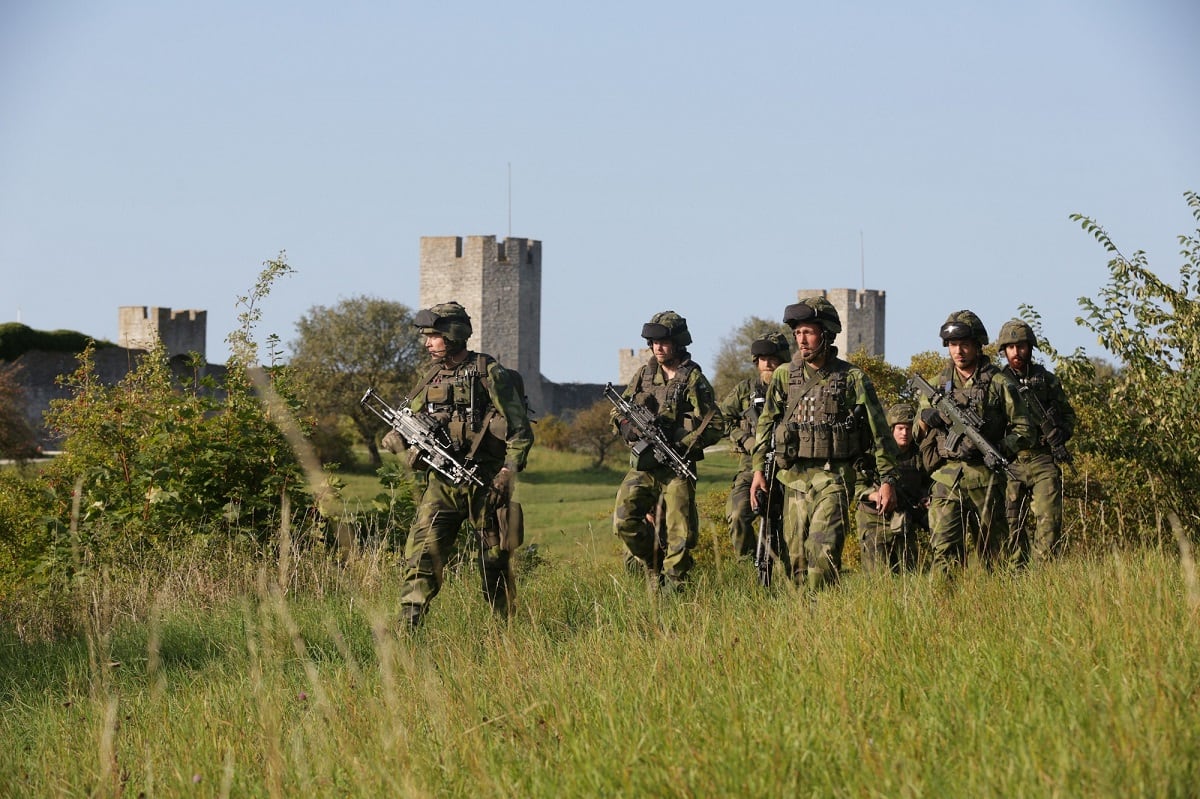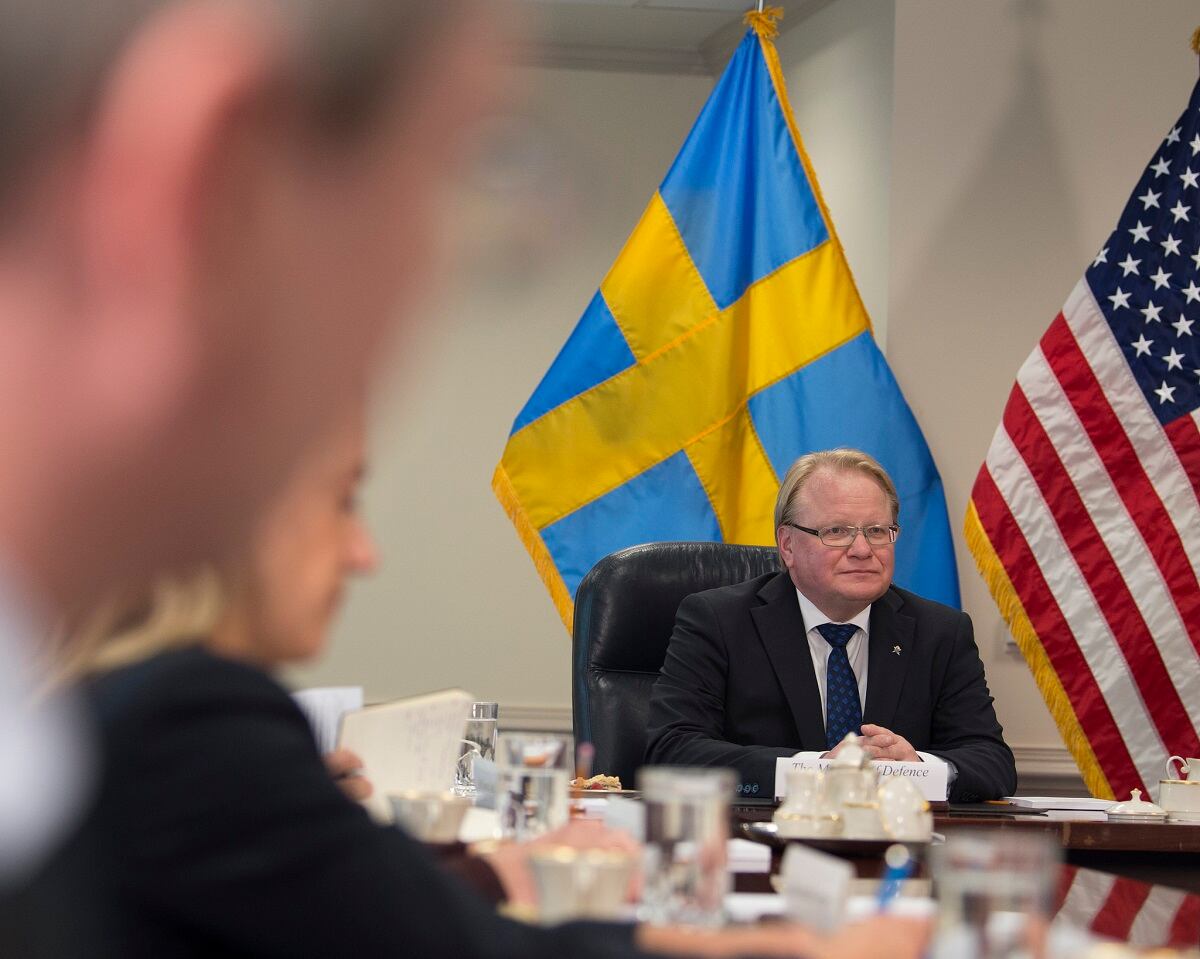STOCKHOLM — The Swedish military can expect to see a sizable increase in its annual budget regardless of the composition of the new government that will be formed in the wake of parliamentary elections.
All of the mainstream parties, including the ruling Social Democrats (SDP), the Moderates, the Center, Liberals and the Sweden Democrats’ right-wing nationalist party, campaigned on delivering a stronger national defense and channeling a much higher level of spending to the Swedish Armed Forces over the next 10 years.
"Sweden needs a more resilient national defense capability that is better funded and resourced," said Stefan Löfven, the SDP’s leader and Sweden’s prime minister.
The SDP is hoping to assemble a new government in partnership with the Leftist and Green parties. These three parties secured a 40.8 percent share of the popular vote in the recently concluded September 2018 election.
Löfven’s main challenge is the center-right Alliance group, which includes the Moderates, the Center, Liberals and Christian Democrats. Together, the four Alliance parties won 40.3 percent of the popular vote.
RELATED

The Alliance is looking to form a new government that excludes both the SDP and the Sweden Democrats.
The Sweden Democrats raised its share of the popular vote to 17.6 percent. All mainstream parties have ruled out forming a coalition that includes the Sweden Democrats.
Defense will be very much on the minds of Sweden’s new government, against a backdrop of an unpredictable Russia and a domestic military that is unable to either fund major new procurement programs or work within the tight parameters of the current budgeting framework.
“Sweden’s national defense has been neglected for decades. What has happened is shameful. The budget allocated to the armed forces must reflect needs, operational realities and the requirement to replace outdated equipment. The goal should be to raise spending on defense to 2 percent of GDP, the recommended NATO level, inside 10 years,” said Ulf Kristersson, leader of the Moderates and someone being widely tipped to become Sweden’s next prime minister.
The Alliance supports a more ambitious spending plan for the military that would increase the armed forces' budget by $2.3 billion in the 2019-2021 budgetary period.
“The [Swedish Armed Forces] needs to be able to afford to run essential equipment-replacement programs. We need more Army brigades, more fighter aircraft, and among other things an increased cyber defense capacity,” Kristersson said.
Restoring the military’s budget and finances to levels that actually reflect the force’s capability requirements will take time. The organization’s budget has been in decline since the Cold War era of 1963, when defense spending amounted to 3.68 percent of Sweden’s gross domestic product. Spending as a ratio of GDP had dropped to 1.1 percent by 2015. It currently stands at about 1.03 percent, a historic low.
RELATED

A force development plan endorsed by the armed forces favors an increase in annual spending on defense to between $7.36 billion and $9 billion by 2025.
In the longer term, and by the year 2035, the military would like to see defense spending rise to more than $12.1 billion. At the same time, the Swedish Armed Forces would be strengthened from the current 50,000 personnel of all ranks to 120,000 by the year 2035.
This proposed new look, improved capability and reinforced organization would comprise at least four brigade-level units, a light infantry special forces regiment, a fleet of 24 surface combat naval vessels and six submarines, eight fighter squadrons, and 120 Gripen combat aircraft.
Stefan Löfven’s SDP-led government adopted new measures in 2017 to increase annual spending on the military from about $4.7 billion to $6.6 billion by 2019.
Under the spending plan supported by the Alliance, defense expenditure would grow year on year after 2019, reaching $8 billion by 2024.
The Swedish Armed Forces’ commander in chief, Gen. Micael Bydén, has warned the government and the national parliament’s Committee on Defence that the military will be forced to implement “far-reaching” cost-saving measures if the military fails to secure a substantial increase in its budget after 2019.
“The government has been updated regarding the true state of our capabilities and finances. We will need to engage in additional and wide-ranging cost savings if there is no real improvement in spending going forward,” Bydén said.
Areas provisionally targeted for cost-saving and resource cutbacks by the Swedish Armed Forces include system procurement programs and the Army’s training and exercise operations. Belt-tightening would also likely place greater constraints on the regularity of Air Force flight missions and the Navy’s littoral patrol and ocean water defense activities.
Sweden’s purchase of the Raytheon-made Patriot air and missile defense system from the U.S. government emerged as one program that could be negatively impacted by a lack of defense spending.
RELATED

Swedish interest in the Patriot increased after the defense missile system was deployed during the military’s Aurora 17 exercises, held in and around the Swedish Baltic island of Gotland in September 2017.
The Patriot system, including missile units, will cost Sweden an estimated $1.2 billion. In August, Defence Minister Peter Hultqvist told a meeting of the national parliament’s Committee on Defence that Sweden plans to purchase an undisclosed number of missiles at an estimated unit cost of about $5 million.
“The purchase of the Patriot anti-aircraft missile system is important given the difficult security situation in Sweden’s neighborhood. Rapid technological developments mean that Sweden faces a mix of threats,” said Joakim Lewin, the head of the FMV’s Army Design Office. The FMV is responsible for materiel sourcing and managing military procurement.
Although the Patriot purchase was advocated by Bydén and the Swedish Armed Forces’ command, it is unclear whether the cost of the acquisition program will be covered within the military’s annual budgeting framework, or through a special project-funding program, which would require the approval of the Riksdag, Sweden’s national parliament.
Gerard O'Dwyer is the Scandinavian affairs correspondent for Defense News.






